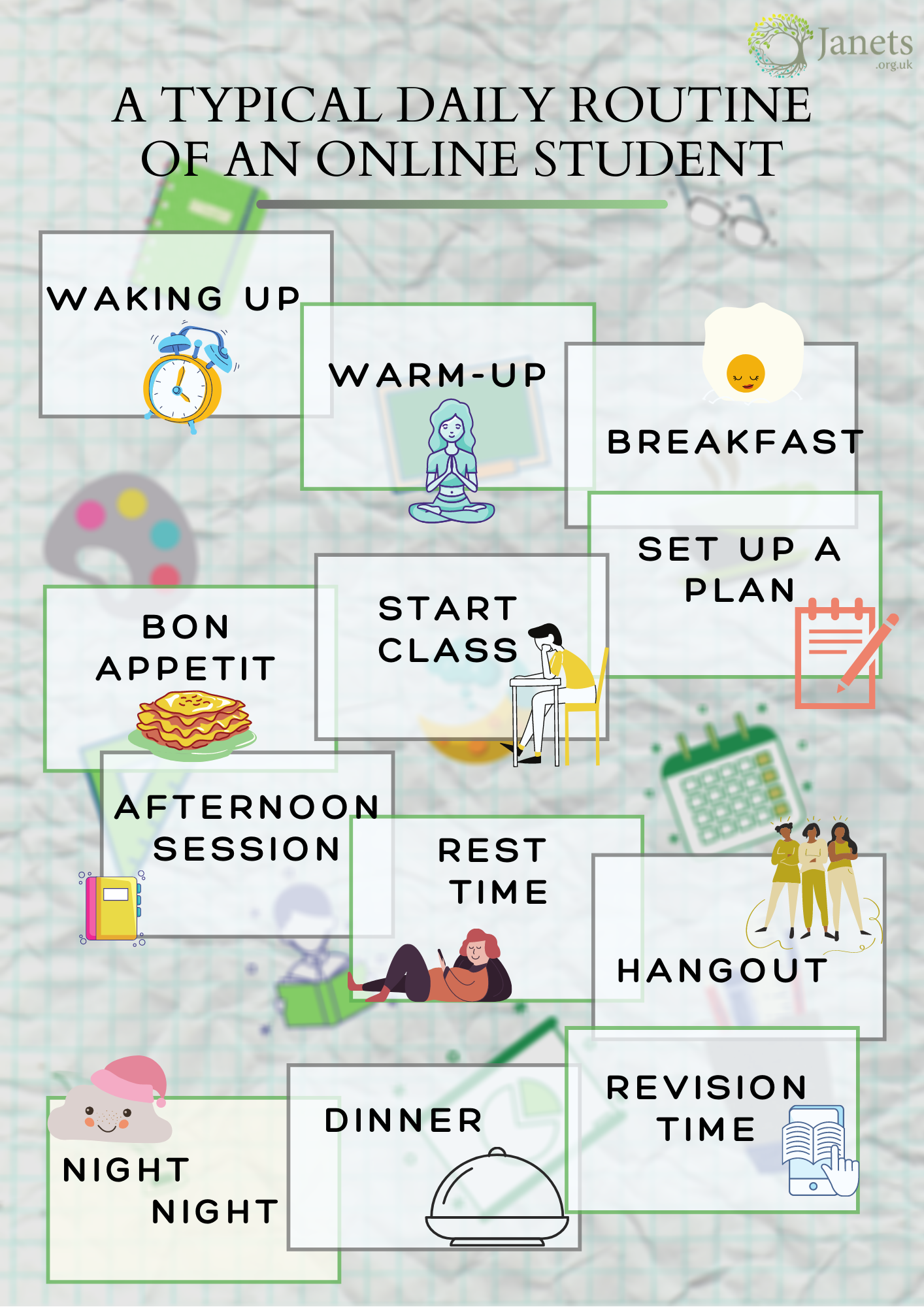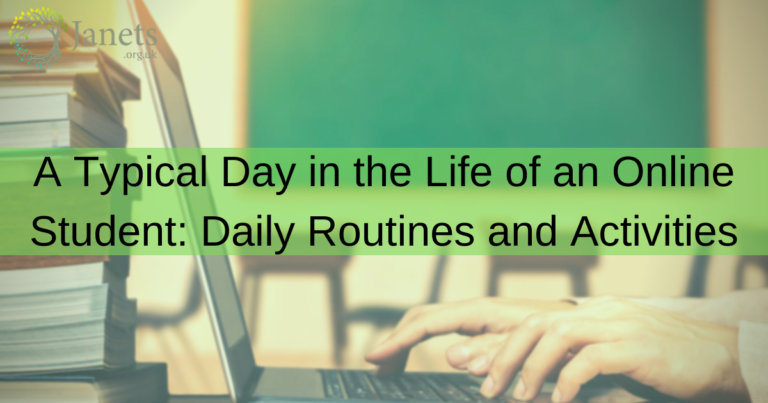Today online learning has become a trending hype among the new generation learners. Thanks to the state of the art technology that makes it easier for us to access even more online course content. So it will eventually become the future of education.
Want to know more about online learning? Stay active with me and discover how it works and how your daily routine will be as an online student.
What is Online Learning?
So, how can you define online learning? Let’s explain it at the outset.
Online learning is the type of education that takes place over the Internet. It is usually referred to as “e-learning” and based on formalized teaching but with the help of electronic resources. Teaching can be based in or out of the classrooms, and the significant components are computers and the Internet.
However, online learning is just one type of “distance learning” -the umbrella term for any learning that takes place across distance and not in a traditional classroom.
Types of Online learning
When it comes to the classification of e-learning, you can categorise it into plentiful of types! You can separate the types by learning tools, synchronicity, learning content and so on. To make it easier for you, I’ve filtered 10 easily distinguishable types of e-learning.
1. Computer Managed Learning (CML)
In this case, computers are used to manage and assess learning processes. It is two-way communication between the student and the computer. The determinations can be made as to whether the student achieved their learning goals on a satisfactory level. If not, then the processes can be repeated until the student has completed their desired goals.
2. Computer Assisted Instruction (CAI)
It is is another type of e-learning which combines computers with traditional teaching. Computer-assisted training methods use a blend of multimedia like text, graphics, sound, and video to enhance learning.
Recently most schools use different variations of computer-assisted learning to trigger the development of skills and knowledge in their students.
3. Synchronous Online Learning
Synchronous online learning enables groups of students to participate in a learning activity together at the same time, from any place in the world. This real-time online learning involves online chats and video conferencing. These allow training participants and instructors to ask and answer questions instantly. Also, it works as a link which foregathered learners different corner of the globe.

4. Asynchronous Online Learning
In this platform, groups of students study singly at different times and locations from each other. No real-time communication takes place in it.
Moreover, asynchronous e-learning methods are often considered to be more student-centred than the synchronous one. However, as it allows self-paced learning, students not having flexible schedules love this type.
5. Fixed E-Learning
Fixed e-learning is a fancy name means that the content used during the learning process does not change from its original state. Also, all the participating students receive the same information as the others. Apart from this, the teachers predetermine the materials and don’t adapt to the student’s preferences.
6. Adaptive E-Learning
Adaptive e-learning is a new and innovative type of e-learning. It focuses on adapting and redesigning learning materials for each learner. Also, it takes into consideration several parameters, like student performance, goals, abilities, skills, and characteristics.
However, this method is challenging to plan and accomplish than the traditional one. Yet its potential value is often understated.
7. Linear E-Learning
Now may be you are thinking, what the heck is linear e-learning!
Linear communication means that information passes from sender to receiver, without exception. It does not allow two-way communication between teachers and students. For instance, Sending training materials to students through television and radio programs are classic forms of linear e-learning.
8. Interactive Online Learning
It allows senders to become receivers and vice versa. This online platform effectively enables a two-way communication channel between the parties involved. However, this type is considerably more popular than linear, as it allows teachers and students to interact more freely with each other.
9. Individual Online Learning
In individual learning, the students study the learning materials on their own, and the teachers expect their students to meet the learning goals on their own. Howbeit, this type of learning is not ideal for developing communication skills and teamwork abilities in students, as it mostly focuses on self-learning.
10. Collaborative Online Learning
Collaborative e-learning is a modern type of learning method. Through it, multiple students learn and achieve their learning objectives together as a group. This boosts the communicational skills teamworking abilities of the students. It also expands the idea that knowledge is best developed inside a group of individuals to interact and learn from each other.

Pros and Cons of Online Studies
A question may cross to your mind that is it really effective or does it hold any snag! In this part, I will discuss the strengths and drawbacks of online studies.
Pros of Online Learning
- The most significant advantage of studying online is the increase in flexibility. That is to say, you can learn when you want to, how and where you want to. You don’t need to bother whether it is in your living room or on the train to the city. You can also take classes while you are on holidays.
- Another plus point is you can take the lessons at any time at your own pace. Therefore, the Virtual Classroom is accessible 24 hours a day, seven days a week. Indeed, time efficiency is another strength brought by the online learning format.
- You can complete your certification quickly and jump into the job field. Because of its trending popularity, now employers don’t bother whether you complete your course online or in person.
- Another benefit of online learning is the ease of access. All you need to study online is a computer with internet access– that’s it!
- It also provide a means to get in touch with people of different cultures and localities. By communicating with them you can learn their cultural and ethical beliefs and enrich your insight of knowledge.
- The most exciting pros of e-learning is its way more affordable than their traditional counterparts! Besides, you don’t need to bear the extra expenses of transport (be it public or petrol), parking, food (unless you bring your own food), etc.
Cons of Online Learning
- Though you can communicate with many people during online studies, you may feel that you are isolating from social interaction. That is to say, you will lack face to face real-time interactions with people around you.
- Also, some courses are not feasible to be taught online. For instance, the laboratory based practical courses can’t be done effectively online. Similarly, courses requiring hands-on experiences, such as Neurology or Chemistry, are simply unsuited to online education.
- In online learning, both students and facilitators must possess a minimum level of computer knowledge to function successfully in an online environment. Otherwise, this platform is not for you!
- If you are a dependent learner, you will find it difficult to cope with the online environment. However, to successfully participate in an online program, you must be well organized and self-motivated. Also, you need to possess a high degree of time management skills.
Though there are few limitations in the online study, I have to agree that the strong points will always overweigh the negative ones!
A Day in the Life of an Online Student
So, how your daily life will look like as an online student? Well, I’ve demonstrated a typical day of an online student below:

1. Waking Up
At first, it will be wise to wake up early in the morning, say, 7:30 am or 8:00 am. After you get up from the bed, you will do your daily tasks to freshen up your body.
2. Warm-Up
Now its time to wake up your mind and soul. For this, you can do some exercises and yoga to make you fit for the day.
3. Brekkie
Yeah! Its time for breakfast! There is a saying that one should not attend even end of the world without a good breakfast! So, treat yourself with a nice and healthy breakfast. Besides, a good brekky is the start of a good day.
4. Set up a Plan
After having the breakfast, make a to do list for the day. In this plan, divide your full day classes into two sections. It will be effective for you to take few lessons before noon and complete the other ones at the afternoon.
5. Start Class
Now its lesson time! Take a short break after making the plan and start the daily classes with much attention and preparations.
6. Bon Appetit
Don’t get too deep into your lessons so that to forget the main meal of the day! Take the lunch on time, its the best hour of a day! Try to avoid hefty meal on your weekdays as it will make you sleepy afterwards. Just kidding! Take whatever you want but be conscious of your health.
7. Afternoon Session
Before starting the afternoon lessons, I’ll again advise taking a mini-break. It’ll help you to boost up your energy. After that, go through the due courses and finish em all.
8. Rest Time
Now its time for you to take rest. You can take a good nap if you want to recharge your body. Also, you can have some snacks. You can do what you want but give your brain enough time to rest.
9. Hangout
You can hang out with your family members or go out with your friends to have some fresh air. These will refill your energy and eliminate the stress level of the hectic day. Or, you can do some creative works like sketching, painting, reading book, etc to pass the free time effectively.
10. Time to Burnish!
After the hangout time, you have to revise the tasks that you’ve learned all day. Also, you’ll need to complete the homework that your virtual teacher gave you and put an end to your study time.
11. Dinner
Typically, you can eat your supper from 7:00 pm to 8:30 pm. Try to eat with the family because dinner tastes even better when we eat it together! If you have a sweet tooth like me, you can have a pudding after dinner. You know, sweet dishes are good for the brain.
12. Nighty Night
Now it’s bedtime. Try to go to bed before 11:00 pm and have a sound sleep. Also, ensure a minimum of 7 hours of sleep to heal up the body and mind.

Online Learning vs Traditional Education
Can online students compete with their traditional counterparts? The answer is, of course, why not?
Nowadays, most online certification bears the same weight as the regular classroom courses. Besides, most online programs grant the same diploma and credentials as traditional degrees. Those with e-learning degrees are essentially given the same proficiencies and employment opportunities the same as those who graduated from regular universities or college programs. So, you can assume that you will face no discrimination in the job fields as an online student. Special thanks to the increasing number of top universities embracing online courses.

How much are Online Degrees in the UK?
There is no one-fits-all-size answer about what is the cost of getting an online degree in the UK. However, the range of tuition fees for these types of courses lies between £2,500 and £15,000. So the average cost is somewhere around £8,500. Note that at some universities you can encounter higher fees for particular courses. For instance, an online MBA degree at one of the best UK universities for distance learning, the University of Essex, the international tuition fees for an MBA degree reach £19,000.
Bottom Line
If you have online access, but you are not learning, not getting inspired, then you are using it wrong, definitely wrong! It is good netiquette to treat the internet as a form of education.
In this blog, I’ve tried to portray a typical day of an online student. Also, I attempted to provide other info regarding online studies. I hope you’ve found this blog pretty helpful. Don’t hesitate to choose online as a learning platform. I assure you that you’ll love the connectivity it provides, the creativity it allows, and the breathtaking wealth of information you’ll have at your fingertips.
Thank you, and good luck.
Adios!





 LOGIN/Sign up
LOGIN/Sign up







